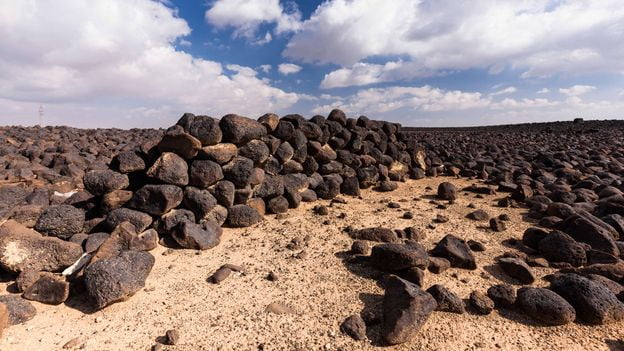We were 30km out of Qasr Mushash, an ancient Roman frontier post on the eastern outskirts of Amman and the site of Jordan’s proposed new capital. The rolling hills of the Levant had turned into a flat, black volcanic desert. Suddenly, a military drone zoomed overhead, perhaps on its way to surveil a battlefield somewhere in nearby Iraq or Syria. A few minutes down the road was the Azraq Wetland Reserve and the Shaumari Wildlife Reserve , where we mingled with gazelles and watched military cargo planes fly over the horizon.
This is Jordan’s Black Desert, also known as Harrat al-Sham, a frontier in more ways than one. The harsh, landscape tells the story of past and present civilisations who have tried to tame it. Roman ruins, half-finished concrete structures, modern military bases and refugee camps dot the highway. And out past a certain point, the desert swallows up any sign of mankind; barely anyone lives here but nomadic Bedouins, who roam among neolithic ” hunting kites ” (animal fences set up by prehistoric hunters thousands of years earlier) and ancient Safaitic inscriptions, written in an Arabic dialect that predates the rise of Islam.
Although less famous than other Jordanian attractions like Petra and the Pillars of Wisdom , the Black Desert offers visitors millions of years of natural and human history, including a magnificent wetland in the desert fed by a fragile oasis.
However, this may change if the Jordanian government has its way. The New City Project aims to create a second capital on the edge of the Black Desert by 2050, using cheap land to lure Amman’s population out of the densely congested city centre. Some experts are sceptical of the plan ; the Black Desert’s only source of water, the Azraq Oasis, previously dried up due to over-pumping and had to be artificially revived.
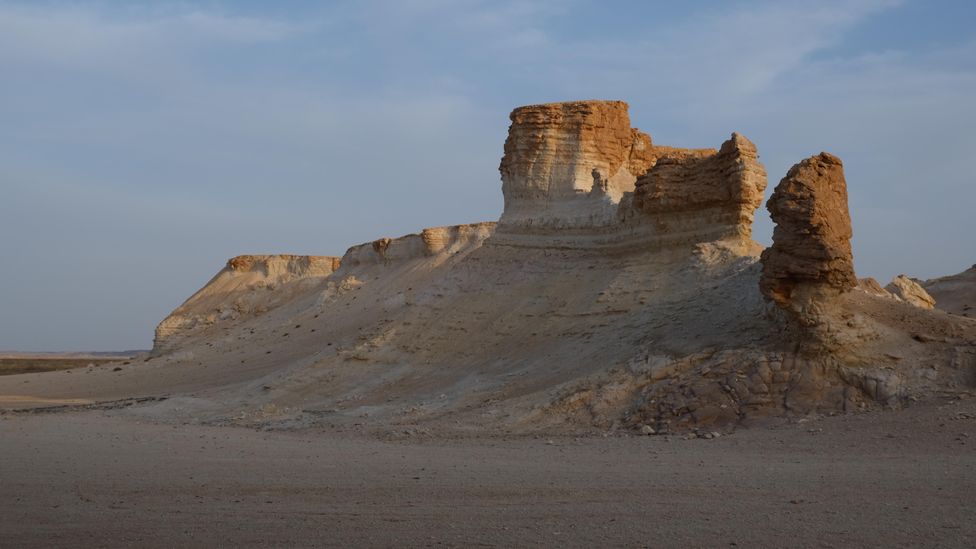
Known for its stunning white buttes, the Dahek Nature Reserve is one of four nature reserves in Jordan’s Black Desert (Credit: Jack Pearson)
The project may forever transform the beautiful, haunted landscape of the Black Desert. Or, given the difficulties Jordan has with water supply, the New City may become yet another abandoned monument to the harshness of the desert.
Azraq’s tent city
While Jordan is safe from war today, the road to the small town of Azraq near the wildlife preserves contains a sombre reminder of the violence on the Syrian side of the Black Desert. Once a temporary transit site for Iraqis and Kuwaitis fleeing the 1991 Gulf War, the Azraq Refugee Camp is now a semi-permanent tent city that houses around 40,000 refugees from Syria.
The modern kingdom of Jordan is not the first state to try settling this area. The Black Desert is dotted with “desert castles”, a series of structures built between the late Roman and early Islamic eras. (Their Arabic name, qasr , comes from the same Latin root as “castle”.) What exactly their purpose was – or whether they all had the same purpose – is a question debated by archaeologists.
In late antiquity, the Black Desert was on the frontier between the Roman and Persian Empires and saw nearly five centuries of intense combat before the Islamic caliphate pushed both superpowers out of the region. The desert castles may have been military bases, trading posts, hunting lodges or some combination of all three.
In a 2016 paper , the archaeologist Karin Bartl noted that the spacing of the desert castles were likely waystations for travellers. Mapped out together, they allowed “comfortable day-long marches on a route of about 100km between Amman and the oasis of Azraq,” she wrote. In other words, the ancient outposts may have been like the modern motorway service stations that tourists now use to traverse the highway – although the journey today takes hours rather than days.
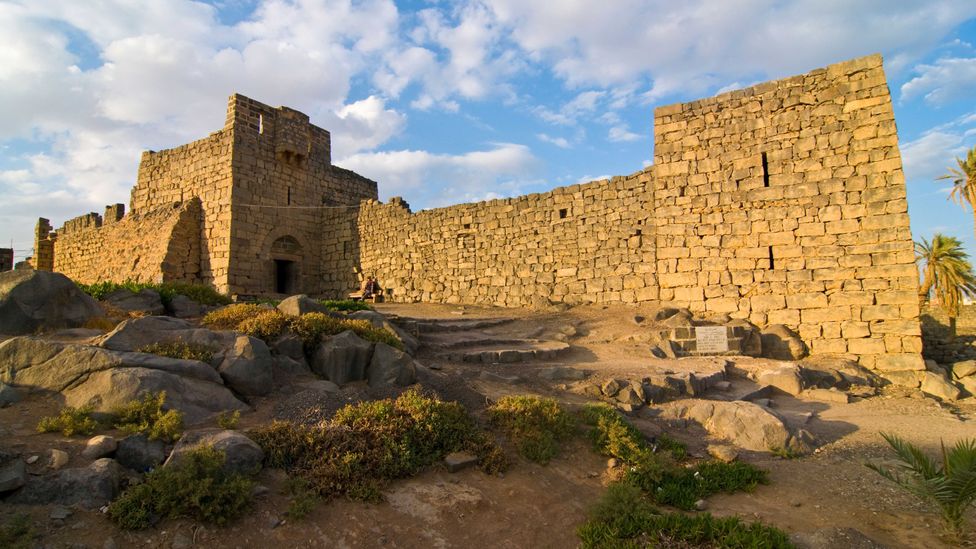
Qasr al-Azraq is one of many desert castles dotted across the region (Credit: Robert Harding/Alamy)
Until modern times, the region was dominated by Bedouin nomads, joined by a small number of Druze and Chechen settlers who came from elsewhere in the Ottoman Empire to the Azraq Oasis in the 19th Century. The Bedouin presence “was a political presence”, according to Dr Murad Kalaldeh, a lecturer at the architecture department at Al-Balqa Applied University in Jordan. “Bedouins did not like to leave this vast territory uncontrolled.”
Controlling even empty land gave the tribes leverage over water sources and caravan routes – whether for trade, military campaigns or the Hajj pilgrimage. Towns like the Druze and Chechen settlement in Azraq grew “to serve the Bedouins”, supplying them with manufactured goods and other needs, Kalaldeh added.
As we ventured further out into the desert, the towns disappeared completely, leaving only campsites for Bedouins and the most adventurous tourists. Even in the deep wilderness, however, there are signs of ancient human habitation. The region is marked by Safaitic rock inscriptions and hunting kites.
The rock art is “an open-air museum that chronicles the history of our ancestors,” said Rawan Al Adwan, a Jordanian artist whose work has been inspired by these inscriptions since she came across them in 2003 while working at the Jordan Archaeological Museum .
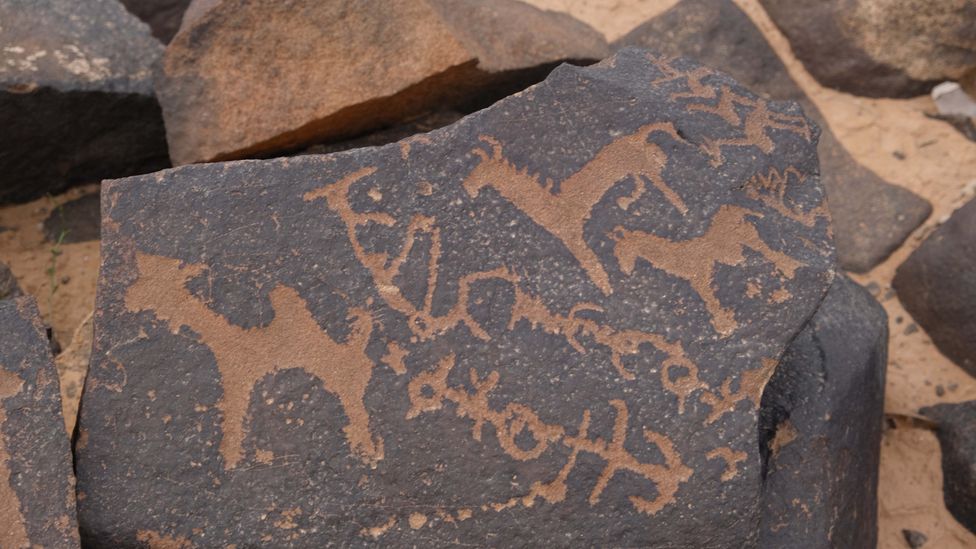
Ancient rock art in the desert depicts animals like horses, ostriches and camels (Credit: Jack Pearson)
The inscriptions also hint at a different, less dry world, Al Adwan notes. Rock art shows lions, horses and ostriches in areas where those animals are no longer found due to overhunting and climate change.
The changes to the landscape have been made more drastic in the past few decades by Jordan’s rapid population growth. Jordan, one of the most water-scarce countries in the world, has overpumped its aquifers to the point that the bodies of water around the Azraq Oasis, even after artificially pumping water back into the wetlands, are at only 0.04% of their historic size. Much of the water has been pumped out to service Amman, whose population doubled from 1975 to 2000 and again between 2000 and 2020. About a quarter of the capital’s water supply now comes from Azraq.
That same population growth has also strained infrastructure, and the New City Project aims to create a more-efficient and less-crowded alternative to the capital. If all goes to plan, government ministries will also be moved from Amman into the new metropolis.
The appeal of the New City is in the very emptiness of the land. Kalaldeh says that this specific part of the Black Desert is the one of the areas with the “least [Bedouin] tribal influence” left.
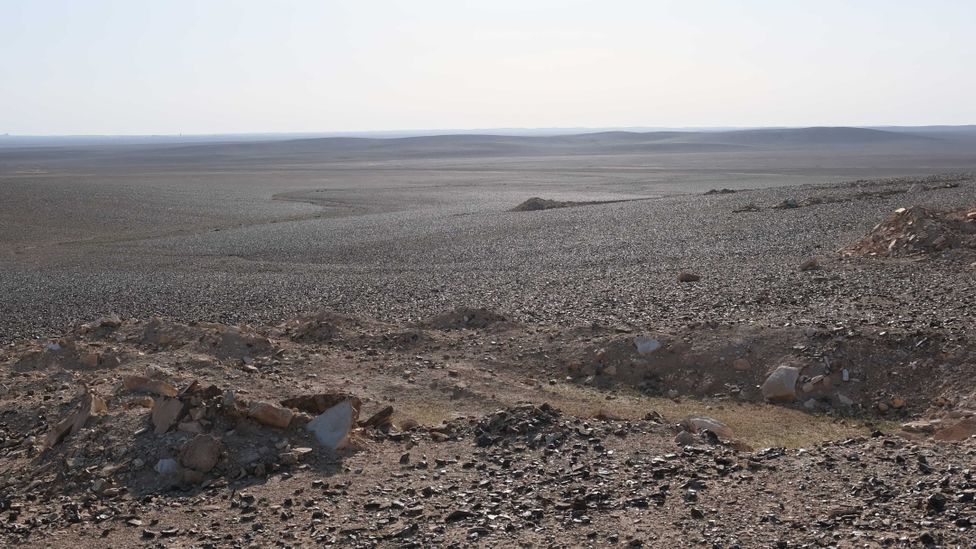
Jordan plans to build the first stage of its New City Project in the desert around Qasr Mushash (Credit: Jack Pearson)
As the area is mostly uninhabited, authorities plan to finance the project by offering developers parcels of cheap empty land. Government spokesman Faisal al-Shboul has told local media that the state will not have to take out any loans to build the New City.
Kalaldeh argues that the scheme is contradictory because the emptiness also means a lack of “location-specific activities” that might draw in investors: no natural resources to exploit, no major industrial zones to service, no groundwater for agriculture. Instead, he believes that the government should focus on expanding cities that already exist in the provinces.
In fact, the value of the Black Desert may come from leaving it untouched. The eastern desert is home to four of Jordan’s 12 nature reserves – and much of the country’s natural beauty.
The Shaumari Wildlife Reserve features gazelles, onagers and the last known population of Arabian oryxes in Jordan. Water buffalos and migratory birds gather at the Azraq Oasis nearby, sustained by the limited water that is pumped back into the protected areas each year.
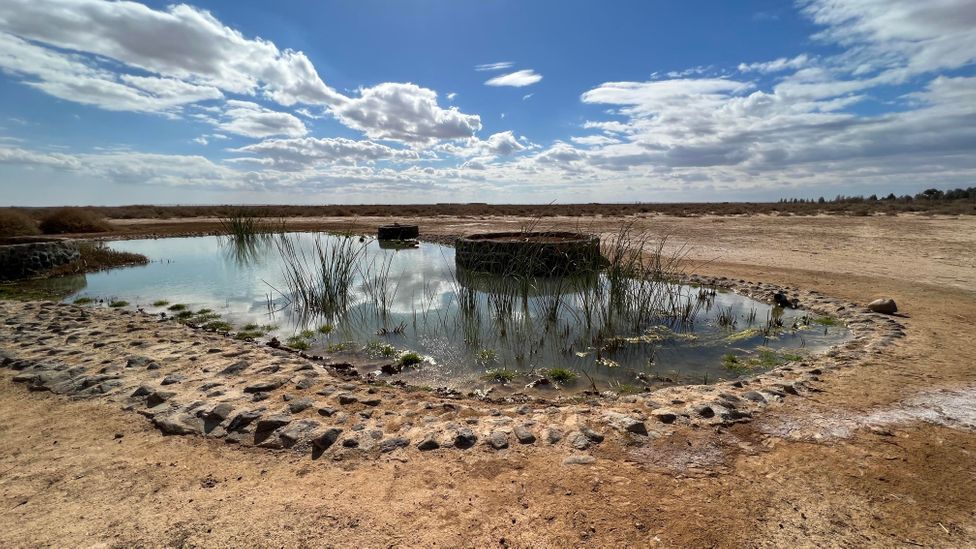
The Shaumari Wildlife Reserve is a thriving protected environment for some of the rarest animal species in the Middle East (Credit: Jack Pearson)
Past the oasis and further into the desert is the Dahek Nature Reserve, known for its ancient Safaitic inscriptions as well as its stunning white buttes that contrast the Black Desert’s dark basalt fields. Al Adwan believes that the very remoteness of the Safaitic inscriptions – which require off-roading through the desert – makes them an appealing destination for adventurous tourists, so long as they’re properly preserved.
Azraq Oasis used to be large enough that Jordanians from the capital took day trips to fish and swim there. However, over pumping meant that the oasis was completely depleted by 1993. The Royal Society for the Conservation of Nature wants to at least get the wetlands back to 10% of their historical size, and, according to signs posted at the wetland preserve, the water ministry has agreed to pump around 1.5 million cubic meters of water back into the oasis per year to help it recover.
Jordan is torn between two impulses towards the Black Desert: to exploit or preserve it. Tourism is perhaps a middle way, allowing the country to benefit financially from its environmental efforts.
Standing at the parched site of the New City, the fenced-in remnants of the Azraq Oasis and the thousands of years of manmade ruins in the Black Desert, we understood the harshness of the environment. But we also saw the perseverance of the few people who live in and around the desert, and who try to call it home.
—
Join more than three million BBC Travel fans by liking us on Facebook , or follow us on Twitter and Instagram .
If you liked this story, sign up for the weekly bbc.com features newsletter called “The Essential List”. A handpicked selection of stories from BBC Future, Culture, Worklife and Travel, delivered to your inbox every Friday.

